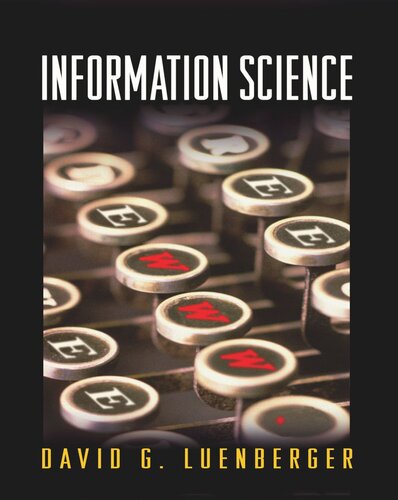

Most ebook files are in PDF format, so you can easily read them using various software such as Foxit Reader or directly on the Google Chrome browser.
Some ebook files are released by publishers in other formats such as .awz, .mobi, .epub, .fb2, etc. You may need to install specific software to read these formats on mobile/PC, such as Calibre.
Please read the tutorial at this link: https://ebookbell.com/faq
We offer FREE conversion to the popular formats you request; however, this may take some time. Therefore, right after payment, please email us, and we will try to provide the service as quickly as possible.
For some exceptional file formats or broken links (if any), please refrain from opening any disputes. Instead, email us first, and we will try to assist within a maximum of 6 hours.
EbookBell Team

4.7
76 reviewsFrom cell phones to Web portals, advances in information and communications technology have thrust society into an information age that is far-reaching, fast-moving, increasingly complex, and yet essential to modern life. Now, renowned scholar and author David Luenberger has produced Information Science, a text that distills and explains the most important concepts and insights at the core of this ongoing revolution. The book represents the material used in a widely acclaimed course offered at Stanford University.
Drawing concepts from each of the constituent subfields that collectively comprise information science, Luenberger builds his book around the five "E's" of information: Entropy, Economics, Encryption, Extraction, and Emission. Each area directly impacts modern information products, services, and technology--everything from word processors to digital cash, database systems to decision making, marketing strategy to spread spectrum communication.
To study these principles is to learn how English text, music, and pictures can be compressed, how it is possible to construct a digital signature that cannot simply be copied, how beautiful photographs can be sent from distant planets with a tiny battery, how communication networks expand, and how producers of information products can make a profit under difficult market conditions.
The book contains vivid examples, illustrations, exercises, and points of historic interest, all of which bring to life the analytic methods presented: